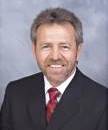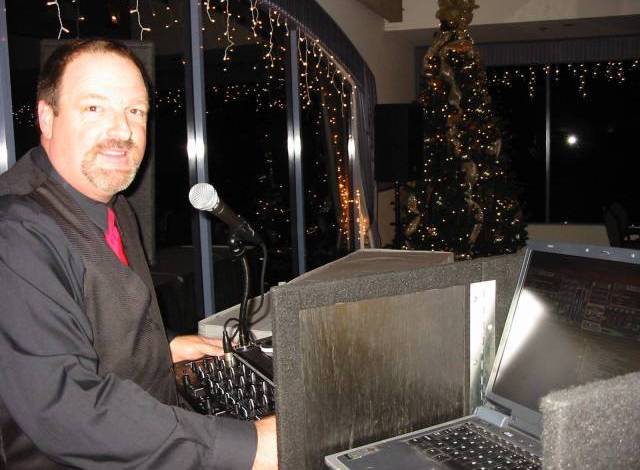






3853 Atlantic Ave.
|
Click here |
Caveats, Disclaimer & Dunno: Report To FERC re LNG Says Data Lacking In What Might Happen in Accident or Sabotage
(May 15, 2004) -- Accompanied by numerous caveats -- including an explicit caution that it "does not and was not intended to provide a measure of risk to the public" plus a lengthy disclaimer of future responsibility -- a report by consulting firm under contract to the Federal Energy Regulatory Commission (FERC) says there's a lack of data showing exactly what might happen in an accident or act of sabotage involving tanker vessel carrying Liquefied Natural Gas (LNG).
In its Executive Summary, the 128 page document ("Consequence Assessment Methods for
Incidents Involving Releases from Liquefied Natural Gas Carriers") by The descriptions of the recommended analysis methods are left to the body of this report. In general these methods can provide only rough estimates of the magnitude of effects for incidents involving large LNG releases on water. This is typically the case with consequence assessments, and it is important to keep in mind that the recommended methods cannot provide precise estimates of effects because of variability in actual incident circumstances as well as uncertainty inherent in the methods used.
In the particular case of the methods of interest here (i.e., methods for large releases from LNG carriers), some important issues include:
In making the modeling recommendations in this report, our goal was to select methods that
provide the most accurate estimates possible; however, we recognize the limitations of the
models we suggest. As a result of these limitations, the project team made some selections that we believe lead to conservative estimates (i.e., tend to overestimate the consequences of LNG releases). Clearly there is an opportunity to develop pool spread models that consider more realistic analysis of the spill behavior on the water surface. In the long term, additional research will need to be performed to develop more refined models, and additional large-scale spill tests would be useful for providing better data for validation of models. However, definition of the specific research tasks and objectives needed to accomplish that research was not in the scope of this project...
It is also important to note that this study addresses the potential consequences of large scale LNG cargo releases without regard to the sequence of events leading to such an incident or their probabilities of occurrence. As such, this report does not and was not intended to provide a measure of risk to the public. A thorough risk assessment would consider both the probabilities and consequences of hazardous events. And finally it should not be assumed that the levels of hazards presented in this study are the assured outcome of an LNG vessel release, given the conservatisms in the models and the level of damage required to yield such large-scale releases...
While studying the results of this report, readers should keep the following key points in
mind:
Models have limitations. The recommended models/approaches represent a reasonable set of
tools to aid decision making. However, it should be recognized that models have an inherent
level of uncertainty, as described in this report. In some cases, the scientific community’s
understanding of the fundamental physical phenomena is better than its ability to simulate such phenomena. Also, models cannot make decisions for us. They inform decision makers, who
must integrate information on many different factors in their decision-making process.
Consequence assessment is only one piece of the risk picture. Understanding risk requires an understanding of (1) what can go wrong, (2) what the consequences might be, and (3) how likely the losses are to occur. This report focuses only on consequence modeling of potential release scenarios, not how likely such scenarios are to occur. Decision making related to scenario risks should be considered in the context of both potential consequence and expected likelihood (or frequency). With regard to potential attack scenarios, the expected likelihood is a function of both threat (the likelihood that someone would try to carry out a specific type of attack) and vulnerability (the likelihood that a specific type of attack would be successful and produce the expected consequences of concern). As noted in the report, LNG vessel and associated facility operations are highly regulated and closely monitored/controlled by authorities, so many layers of protection exist against losses. The dependability of these layers of protection was not addressed in this project, but are important considerations in understanding the total risk picture.
Risk perception and risk acceptance are complex issues. How individuals and groups of
individuals perceive or accept risks depends on many factors, which are often subjective with no clear right and wrong answers. Even when very precise/certain risk information is available, different people often react to the information in different ways. This project made no attempt to place value judgments on what risks people should or should not accept.
The first page of the report is a disclaimer by the consulting firm that states in pertinent part:
LBReport.com posts a link to the full 128 page document, below.
In releasing the report, FERC simultaneously announced 14 days of public comment on what types safety modeling the agency should use in evaluating future LNG terminal applications.
As reported in April 2004 by LBReport.com, in March and April 1979, an official of the General Accounting Office (GAO) told congressional committees that new Liquefied Natural Gas (LNG) facilities should be sited in remote locations and urged prohibiting new, large hazardous commodity storage facilities in or near densely populated areas.
"We believe remote siting is the primary factor in safety. Because of the inevitable uncertainties inherent in large-scale use of new technologies and the vulnerability of the facilities to natural phenomena and sabotage, the public can be best protected
by placing these facilities away from densely populated areas," said GAO testimony presented by J. Dexter Peach, then Director of the GAO's Energy and Minerals Division.
Portions of the GAO testimony refer to "Liquefied Energy Gases" or LEG (a collective term that includes Liquefied Natural Gas (LNG, which is flammable) as well as Liquefied Petroleum Gas (a different substance, which is explosive) and other liquefied gases.
"We believe remote siting is the primary factor in safety. Because of the inevitable uncertainties inherent in large-scale use of new technologies and the vulnerability of the facilities [for Liquefied Energy Gases, including LNG and others] to natural phenomena and sabotage, the public can be best protected by placing these facilities away from densely populated areas," Mr. Peach told Congress in 1979.
In March 2004, FERC -- subsequently created by Congress to oversee national regulation of energy commodities including natural gas and electricity -- asserted that it has exclusive jurisdiction over siting and safety issues surrounding an application by a Mitsubishi subsidiary to build and operate an 80+ million gallon LNG terminal within the Port of LB. Viewed by some as test case nationally, FERC's action put it on a collision course with the CA Public Utilities Commission which is asserting CA regulatory jurisdiction in the LB LNG proceeding.
As previously reported by Regardless of whether FERC approves the LB LNG proposal, the Port of Long Beach -- governed by Meanwhile, in a development reported first by LBReport.com on May 13, LB Councilmembers Bonnie Lowenthal and Dan Baker jointly agendized an item for the May 18 City Council agenda seeking Council support for their opinion that negotiations on the LNG project should be terminated, any deal points vacated...and the City Manager instructed accordingly.
[May 17 update] The item was subsequently withdrawn from the May 18 Council agenda on May 17. [end update]
The Mitsubishi subsidiary seeking to build and operate the LB LNG facility maintains a web site with information on its proposal, accessible at www.soundenergysolutions.com.
To view the report to FERC in pdf form, click www.soundenergysolutions.com." target="_blank">"Consequence Assessment For Incidents Involving Releases From Natural Gas Carriers.
Contact us: mail@LBReport.com |